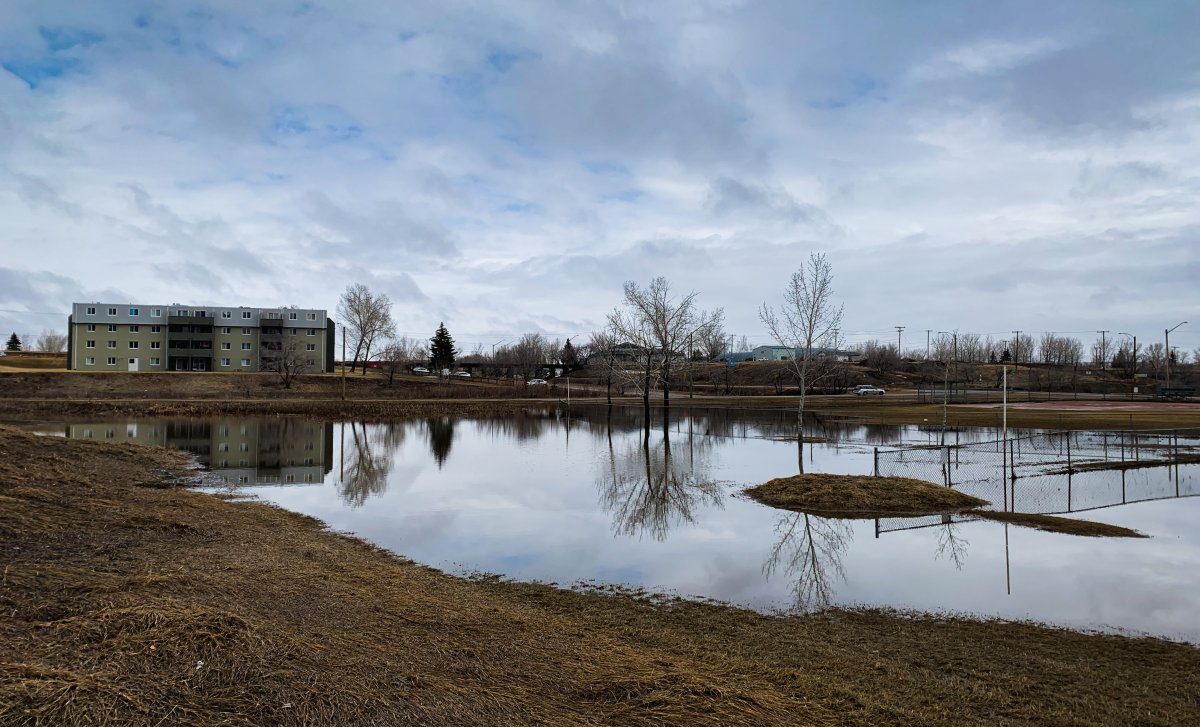Saskatchewan’s Water Security Agency has released the spring runoff report, taking into account the current spring storm.

While the southern half of the province is hammered by a spring snowstorm, the colder temperatures forecasted can be seen as a positive.
“No one wants to hear it, but from our perspective, having the snow is better than the rain at this time,” said Patrick Boyle, spokesperson with the Water Security Agency.
The below zero temperatures will prompt a slower melt from the recent snowfall, making quick flooding less likely.
The snow will have more time to seep into the ground, improving moisture conditions in the soil.
“It actually helps with the current spring runoff. If it came as rain, that precipitation can move off the landscape quickly and add to the peaks that will prolong the situation,” Boyle said.

Get daily National news
Swift Current Creek flooding, reported on by Global News last week, has tapered off as water levels begin to return to normal.
The Moose Jaw River is still at peak but is expected to recede in the next few days. Ice has cleared on the river with minimal jamming.

The Qu’Appelle River levels are higher than in 2022 but the WSA does not predict any significant flood impacts.
Boyle said that most of their attention has been on potential ice jamming.
“With those warm temperatures, a lot of water gets moving in the system but you also have thick ice still on rivers, lakes, and bodies across the province so you really get that moving and the ice breaks up but it is still really thick and strong.”
He said most of the ice systems have passed through the Qu’Appelle system, but they are monitoring the situation.








Comments